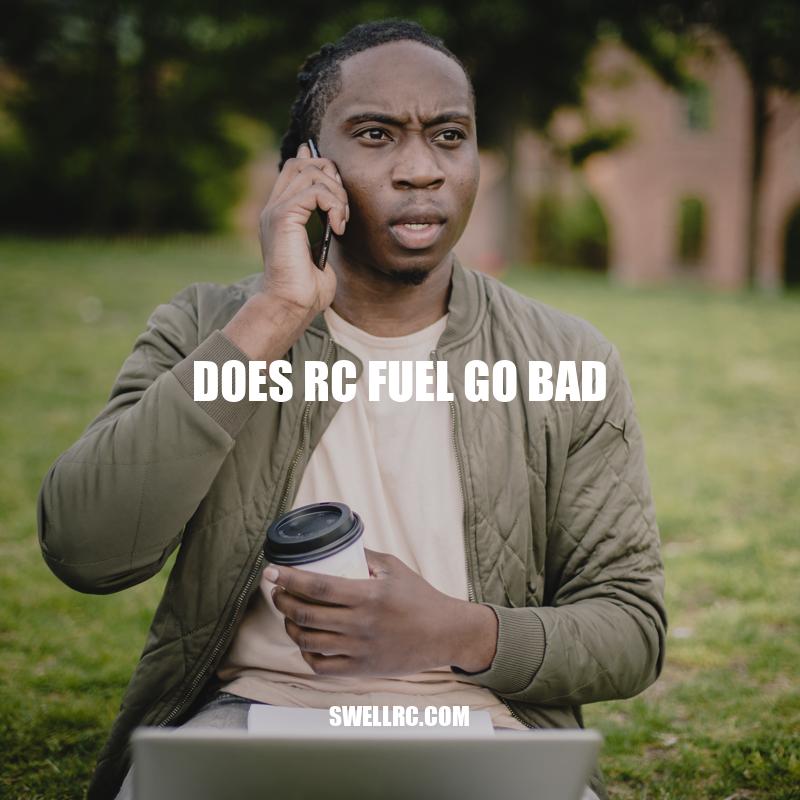Does RC Fuel Go Bad? A Comprehensive Guide
RC fuel is a popular type of fuel used in remote control airplanes, helicopters, and cars. One question that often arises among hobbyists and RC enthusiasts is whether RC fuel goes bad. The answer to this question is not a simple yes or no. While RC fuel can technically last indefinitely if stored properly, various factors such as the type of fuel, its blend, storage conditions, and exposure to air and sunlight can affect its performance and lifespan. It is important to understand the composition of RC fuel and how to properly handle and store it to ensure that your remote control vehicles perform at their best. In this article, we will explore the issue of whether RC fuel goes bad, discuss signs of bad RC fuel, and provide tips on how to store and handle the fuel properly to extend its lifespan and enhance its performance.
Understanding RC Fuel Composition
RC fuel is made up of three primary components: methanol, nitromethane, and oil. Methanol is the main ingredient and makes up anywhere from 50% to 70% of the fuel blend. Nitromethane provides additional power and typically makes up around 20% to 30% of the fuel. Oil helps lubricate the engine and prevents it from overheating. The type of oil used in RC fuel can vary depending on the manufacturer and the specification. There are different blends of RC fuel, each with varying proportions of these three components. Higher percentages of nitromethane typically provide more power, but they also cause more wear on the engine. Some RC fuel brands like Byron Fuels, Morgan Fuels, and PowerMaster Fuels, have developed different blends suited for specific types of engines or applications. It is important to choose the right fuel blend for your specific remote control vehicle to achieve optimal performance.
What are the ingredients for RC fuel?
The ingredients for RC (remote control) fuel include:
- Methanol
- Nitromethane
- Synthetic oil
- Caster oil
Methanol is the main ingredient and makes up about 60-70% of the fuel. Nitromethane is added to increase the performance of the engine, while synthetic and caster oil provide lubrication and prevent engine damage.
It is essential to use high-quality fuel that matches with your RC engine specifications for optimal performance. Some popular websites such as RC Planet and Tower Hobbies offer a variety of RC fuels for purchase.
Does RC Fuel Go Bad?
RC fuel can technically last indefinitely if it is stored properly. However, over time, the fuel may experience a decrease in performance due to several factors such as contamination, moisture, and oxidation. Here are some important facts to know about RC fuel storage:
Factors that can affect RC fuel performance:
| Contamination | Dirt, debris, and other particles can clog up the engine causing it to run less efficiently. |
|---|---|
| Moisture | Water or humidity can cause the methanol in the fuel to evaporate, affecting its composition and performance. |
| Oxidation | RC fuel that has been exposed to air, sunlight or heat can experience chemical changes that can alter its composition and performance. |
How to store RC fuel:
– Store RC fuel in a cool, dry place away from moisture, sunlight and heat sources.
– Make sure the container is airtight and sealed properly to prevent air from getting inside.
– Use a fuel stabilizer to extend the life of your RC fuel.
– Monitor fuel quality regularly and dispose of any batch that is contaminated or has passed its expiry date.
By taking these precautions, you can ensure that your RC fuel lasts longer and performs better, allowing you to enjoy your remote control vehicle for years to come.
Can fuel be stored for a long time?
Yes, fuel can be stored for a long time, but there are certain precautions you need to take to ensure its longevity. Here are some tips:
- Store fuel in a cool, dry place away from direct sunlight.
- Use containers that are designed for fuel storage and are made of materials that won’t degrade over time.
- Add a fuel stabilizer to the container to prevent the fuel from degrading and oxidizing.
- Rotate your fuel supply regularly to ensure that the fuel stays fresh.
If you’re interested in learning more about fuel storage, you can find a wealth of resources online. There are websites and products available that can help you choose the right storage containers and find the best fuel stabilizers on the market.
Signs of Bad RC Fuel
If you notice any of the following signs, it may be time to replace your RC fuel:
Decreased Performance:
- Difficulty starting the engine or maintaining idle speed.
- Engine sputtering or stalling during operation.
- Decreased power or performance compared to fresh fuel.
Appearance and Quality:
- Separation of fuel components, such as oil settling to the bottom of the container.
- Cloudiness or unusual coloring in fuel.
- Sediments, debris or particles visible in the fuel.
Smell:
- Off-odor or unusual smell in the fuel, which may indicate contamination or oxidation.
If you notice any of these signs, it’s recommended that you dispose of the old fuel and replace it with fresh, high-quality RC fuel. Some websites and stores sell fuel testers that can help you determine the quality and composition of your fuel. With regular monitoring and proper storage techniques, you can ensure that your RC fuel always performs at its best.
Here are some examples of high-quality RC fuels available on the market:
- Sidewinder Pro Race 30 Glow Fuel by Byron Originals
- Morgan Cool Power 30 RC Glow Fuel by Morgan Fuel
- Rotor Riot KWAD Fuel Glow Fuel by Drone Racing League
Why does my car struggle to start but runs fine?
There could be a few reasons why your car struggles to start but runs fine once it does:
- Weak battery
- Starter motor problems
- Faulty ignition switch
- Clogged fuel filter
- Bad fuel pump
If your car is struggling to start frequently, you should consider getting it checked by a mechanic.
Check out websites like Autoblog, Car and Driver, or MotorTrend for more car-related information and product reviews.
How to Store RC Fuel
Proper storage of RC fuel will ensure that it lasts as long as possible and maintains its quality over time. Here are some tips for storing your RC fuel:
Location:
– Store RC fuel in a cool, dry place away from direct sunlight, heat or moisture.
– Avoid storing fuel in areas with extreme temperatures or humidity, such as basements, garages, or attics.
Containers:
– Use the original container to store RC fuel.
– Ensure that the container is tightly sealed to prevent air from entering.
– Consider using a fuel storage container that is designed to keep moisture out and protect the fuel from sunlight.
Duration:
– Keep track of the fuel’s age and use oldest fuel first to prevent it from going bad.
– If you have not used the fuel for a long period, dispose of it and buy fresh fuel.
If you are looking for fuel storage containers or other accessories, several websites sell specialized RC fuel storage systems. Additionally, it’s important to dispose of RC fuel properly if it’s no longer good. Check with your local hazardous waste facility or recycling center to find out about safe disposal methods.
How do you store RC fuel?
Proper storage of RC fuel is important to ensure its quality and performance. Here are some tips:
- Store RC fuel in a cool, dry place away from direct sunlight and heat sources.
- Keep the fuel container tightly closed to prevent evaporation and contamination.
- Do not store RC fuel near pesticides, fertilizers, or other chemicals.
- Label the container with the type of fuel and date of purchase to ensure you use fresh fuel.
- Dispose of any old or contaminated fuel properly.
Some RC fuel manufacturers may provide additional storage guidelines on their website or product label. It is important to follow their recommendations for optimal fuel performance.
Conclusion
In conclusion, RC fuel can last a long time if it is stored properly, but it will eventually lose some of its performance. Methanol is the primary component of RC fuel, and it can evaporate over time, making the fuel less effective. It is important to store RC fuel in a cool, dry place away from sunlight, heat or moisture, ensure the container is tightly sealed, and use oldest fuel first to avoid fuel going bad.
If you notice any signs that your RC fuel has gone bad, such as difficulty starting the engine, decreased power, or increased engine wear, it may be time to replace it with a fresh batch. Disposing of old fuel correctly is important as well, and you should contact your local hazardous waste facility or recycling center to learn about safe disposal methods.
Remember that using quality RC fuel is important for maintaining the performance of your remote control vehicles. Proper storage of RC fuel can help ensure that your vehicles operate at their best and provide you with many hours of fun and excitement.



